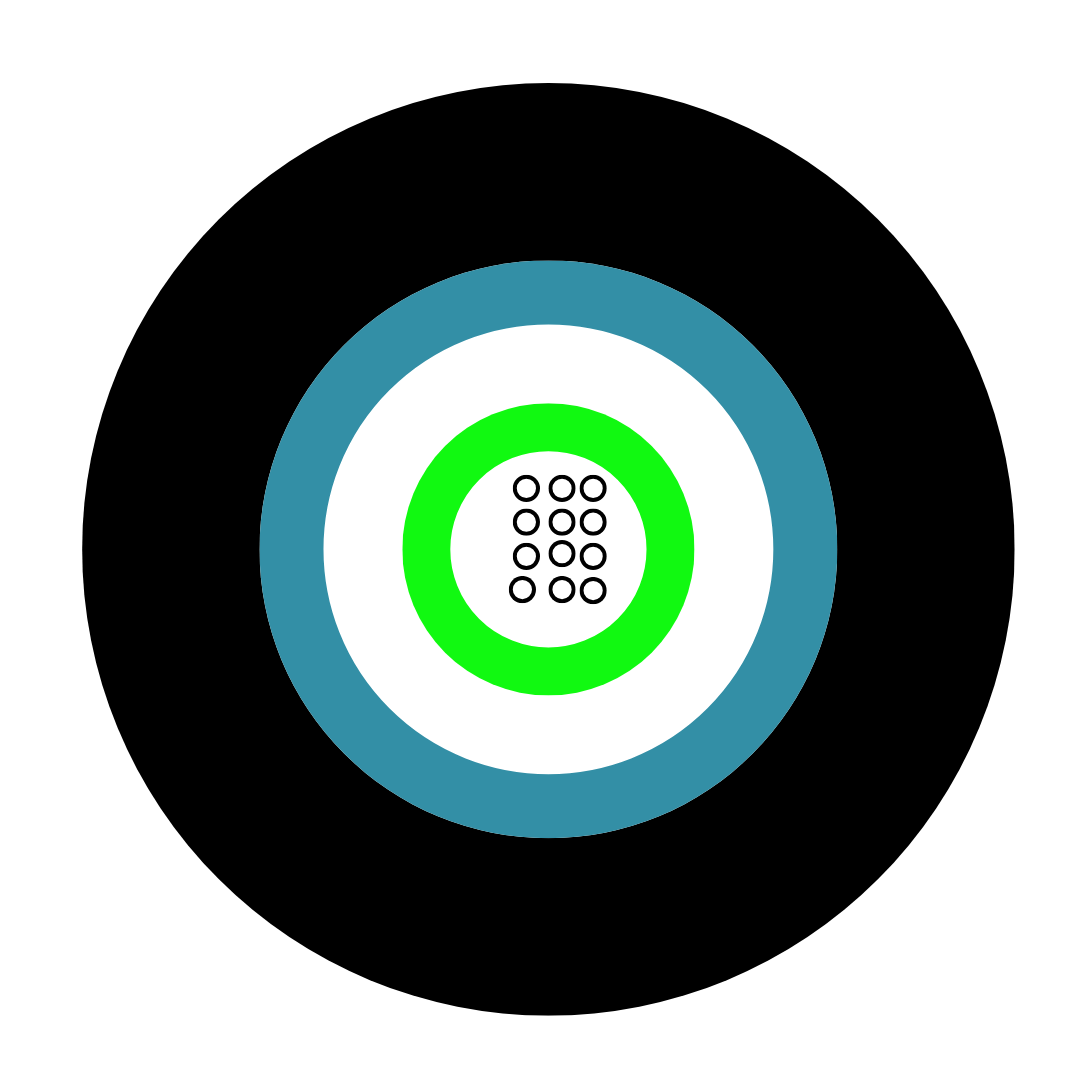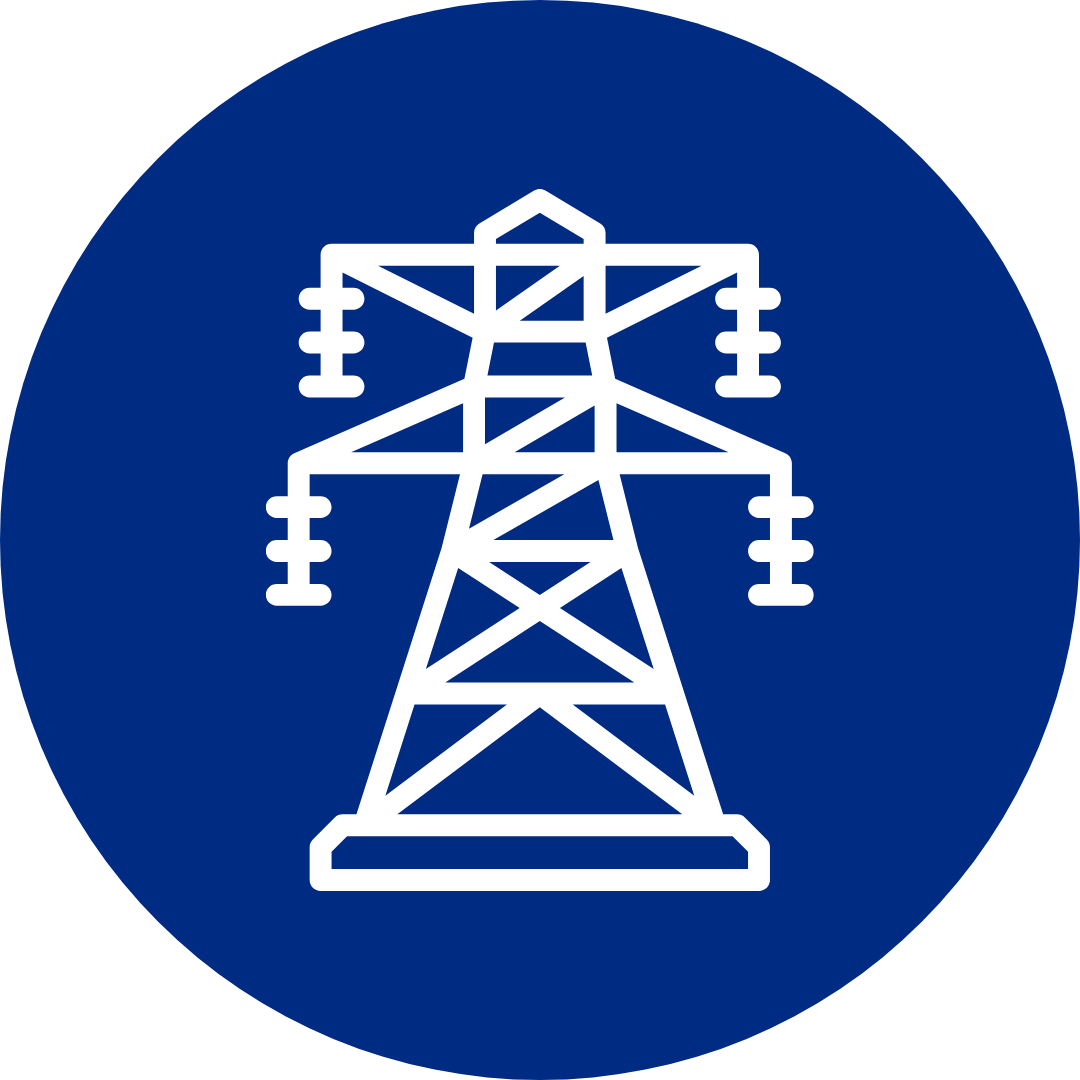Understanding electrical cable colours is vital for anyone working with wiring in the UK. The standard cable colour codes in the UK, updated to match European standards in 2006, help people safely identify live, neutral, and earth wires. These colours make it easier to avoid mistakes and ensure safe installations or repairs.
Before 2006, older homes in the UK used different wiring colours. This can create confusion, especially during renovations or when mixing new and old systems. Knowing both the historical and current standards prevents accidents and helps people confidently handle electrical tasks.
Key Takeaways
The UK moved to European wiring colour codes in 2006.
Recognising new and old cable colours is important for safety.
Correctly identifying live, neutral, and earth wires prevents electrical hazards.
UK Wiring Colours: Past Vs Present
The UK has changed its electrical cable colour codes over time. These changes help make electrical installations safer and clearer for everyone working with wiring.
Old UK wiring colours (used before 2004 for single-phase wiring and flexible cables):
A table can help compare the old and new colour codes for single-phase circuits:
Wire Function | Old Colour | New Colour |
Live | Red | Brown |
Neutral | Black | Blue |
Earth | Green/Yellow | Green/Yellow |
Since 2004, the UK follows the European harmonised colour code. Most homes and buildings now use these new UK wiring colours in fixed and armoured cable, as well as in flex cable:
These changes were made under wiring regulations to match international standards. This has helped reduce the risk of mistakes during electrical work, especially in places with both old and new wiring.
Both the voltage carried and the function of each wire are now easier to identify. Electricians need to check which colour code a building uses before starting work. This is important for safety and to follow UK regulations.
When Did The UK Change Its Cable Colours?
The UK changed its electrical cable colour coding in 2004. This update was made to harmonise with European standards and improve safety through consistency. Before this change, the UK used a different set of colours for live, neutral, and earth wires.
Old wiring systems used the following core colours:
From 2004, the new system introduced changed the cable colours to:
This change aimed to minimise confusion for anyone working with cables across Europe. It also helped reduce mistakes during installation and repairs, especially when upgrading or inspecting outdated wiring systems.
Outdated wiring systems may still be found in older buildings. These installations might use the pre-2004 colour codes, making it important to identify which system is in place before carrying out any work.
A comparison of the old and new colour codes:
Function | Old Colour (Pre-2004) | New Colour (Post-2004) |
Live | Red | Brown |
Neutral | Black | Blue |
Earth | Green or Green/Yellow | Green/Yellow |
Anyone working on electrical systems should always check the wiring colours before starting. Mixing up old and new colour codes can be dangerous. Proper identification helps prevent accidents and ensures compliance with current standards.
What Colours Did UK Wiring Use Before?
The UK used a different set of wiring colours before standardisation changes in 2004. These older colour codes can still be found in some homes and buildings.
For single-phase wiring (most homes):
Function | Old Colour (Pre-2004) |
Live (L) | Red |
Neutral (N) | Black |
Earth (E) | Green/Yellow (after 1977), Green (before 1977) |
Before 1977, the earth wire was only green. After 1977, the earth used a green and yellow stripe pattern for better visibility and safety.
For three-phase wiring (commercial and industrial):
L1 (Phase 1): Red
L2 (Phase 2): Yellow
L3 (Phase 3): Blue
Neutral: Black
Earth: Green/Yellow
It’s important to remember that these old wiring colours can be confusing if found next to the new ones introduced after 2004. Labelled connections are recommended when both old and new cables are present.
Many electricians still come across these old colour codes during upgrades and repairs. Knowing the previous standards is key for safe identification and maintenance.
How Did UK Cable Colours Get Updated?
The UK’s cable colour coding system has not always been the same. For years, the country used a set of colours for different electrical circuits and connections. This changed to improve safety and to bring the UK in line with European wiring standards.
In 2006, Amendment 2 of the 17th Edition BS 7671 Wiring Regulations introduced new wiring colours. These changes meant contractors and electricians had to adjust how they identified live, neutral, and earth wires.
The main reason for updating the wiring colour standards was to harmonise UK systems with those used across Europe. Making wiring colours more consistent helped reduce confusion, especially for professionals working across different countries. It also improved safety during inspections, repairs, and new electrical installations.
Old vs. New Wiring Colours Table:
Conductor | Old UK Colour | New Colour (Post-2006) |
Live | Red | Brown |
Neutral | Black | Blue |
Earth | Green/Yellow | Green/Yellow |
Updates to the colour coding applied to most wiring systems, affecting homes, businesses, and public buildings. It covered essential parts of connection and insulation, making sure new wiring colours are used in all new work.
Electricians follow these updated wiring regulations to meet both safety rules and modern building regulations. Old wiring in existing installations can stay in place, but any new or altered circuits now use the updated standards.
What Are The Current Plug Wire Colours?
In the UK, plug wires follow strict colour codes. These codes help electricians, homeowners, and engineers connect electrical appliances safely. The standards apply to plug wiring, consumer units, and other domestic installations.
The main three-core and earth cable found in most plugs contains three coloured wires:
Wire | Colour | Function |
Live | Brown | Carries current to the appliance |
Neutral | Blue | Returns current from the appliance |
Earth | Green/Yellow | Safety – prevents electric shock |
Live (Brown) connects to the fuse inside the plug. It brings power from the mains to the device.
Neutral (Blue) completes the circuit. It usually connects on the left side of the plug.
Earth (Green/Yellow) acts as a safety wire, especially vital for metal-bodied appliances.
Single-phase connection for domestic use also follows these colours.
Consumer units and sockets use the same scheme, making wiring easier to identify.
Older wires may use different colours, but all new installations since 2006 must use the current scheme. Electricians must always match wire colours to their proper functions to avoid hazards.
Many household cables, especially those with three-core and earth types, use this colour code throughout their length. It is important not to mix new and old wire colours in the same installation for safety reasons.
A Simple Plug Wire Colour Guide
Understanding UK plug wiring colour codes is important for both safety and proper installation. Each wire colour has a specific meaning, which helps prevent mistakes during wiring or repairs.
Plug Wire Colour Chart At A Glance
Plug wires in the UK follow strict colour coding. As of 2025, the standard colours are:
Wire Function | Wire Colour | Old Colour (Pre-2004) |
Live | Brown | Red |
Neutral | Blue | Black |
Earth (or CPC) | Green/Yellow | Green/Yellow |
Live (Brown): Carries current from the power source to the appliance.
Neutral (Blue): Returns current to the power source.
Earth (Green/Yellow): Safety wire, reduces risk of electric shock.
It is important to connect wires to the correct terminals. Incorrect wiring can cause electric shock, appliance damage, or fire. Always turn off the power before wiring.
Three-Phase Cable Colours In The UK And Europe
Three-phase systems use three separate wires to carry alternating current. Each phase has its own colour, which helps to keep wiring safe and easy to identify.
In the UK and across most of Europe, a harmonised standard for three-phase wiring has been in place since 2006. The following table shows the typical colours:
Phase | Cable Colour |
L1 (Phase 1) | Brown |
L2 (Phase 2) | Black |
L3 (Phase 3) | Grey |
The neutral wire is always blue, and the earth (or protective conductor) is green and yellow striped.
Key points to remember:
Single-phase and three-phase systems use different colour codes.
Three-phase wiring is common in industrial and commercial buildings.
Using the correct colours helps electricians connect three-phase systems safely and quickly.
Many European countries follow the same standards as the UK. This alignment makes it easier for engineers and electricians to work across borders.
Older installations may still have different colour codes. It is important to check and identify wires carefully before starting any electrical work.
Which Colour Is The Earth Cable?
In the UK, the earth cable is identified by its green and yellow stripes. This colour code is set by regulation and must be used for all protective earth wires.
The green/yellow earth cable plays a key role in electrical safety. It helps carry any fault current safely to the ground, protecting both people and equipment. No other cable should use this colour combination for any purpose except for an earth connection or bonding.
The table below shows the typical UK domestic wiring colours:
Wire Function | Cable Colour |
Live | Brown |
Neutral | Blue |
Earth/Protective | Green & Yellow |
Homeowners may sometimes find plain green or yellow cables in very old wiring. However, current standards strictly require green/yellow stripes for new earth wires.
Electricians should connect the earth wire to the earth terminal in plugs, sockets, and devices. This earth connection is essential for safety, especially in metal-cased appliances.
When checking or installing cables, always look for the green/yellow earth wire. If unsure, it is important to seek advice from a qualified person.
Which Colour Is The Neutral Cable?
In UK electrical wiring, the neutral cable plays a key role in completing the circuit by returning current to the power source.
As of 2025, the standard colour for the neutral wire in the UK is blue. This update was made to align with European standards and applies to all new installations and rewiring.
The neutral wire is different from the live and earth wires, which are brown and green/yellow, respectively. Misidentifying these wires can lead to safety risks.
UK Standard Cable Colours (2025):
Function | Cable Colour |
Live | Brown |
Neutral | Blue |
Earth | Green/Yellow |
The blue neutral wire is typically marked clearly inside sockets, switches, and circuit boxes. Sometimes, older properties might still have the former black neutral wire if they have not been rewired.
Key points about the neutral wire:
Always blue in new and recent installations.
Its main job is to carry current away safely.
Must not be confused with the live or earth wires due to safety concerns.
When working with electrical wiring, it is always important to double-check the wire colours and seek professional advice if unsure.
What Colour Is The Live Wire?
In the UK, the live wire is identified by the colour brown. This was introduced with the wiring regulations update that aligned UK standards with European codes.
Before 2006, the live wire was often coloured red in older installations. Since the change, all new and rewired circuits use brown as the standard colour for the live conductor.
The live wire is responsible for carrying electrical current from the power source into a device or appliance. It is essential to handle the live wire with caution, as it can cause electric shock.
A simple table can help illustrate the change in colour codes:
Function | Old Colour (pre-2006) | New Colour (current) |
Live Wire | Red | Brown |
Wires should always be checked and labelled if there is any uncertainty, especially in homes with older wiring. When working with wiring, correct identification of the live wire is crucial for both safety and compliance with UK standards.
Frequently Asked Questions
What are the standard colour codes for electrical wires?
In the UK, fixed wiring follows the IEC system, with brown for the live conductor, blue for neutral and green-and-yellow stripes for earth. These consistent colours help electricians identify each wire’s function quickly and safely.
What are the colour coding wires in the UK?
New UK installations use brown for live, blue for neutral and green-and-yellow for earth, whereas older homes may still have red lives and black neutrals. Always confirm which scheme is in place before doing any work.
What is the NEC standard for cable colour code?
The NEC applies to the United States, not the UK, and uses black, red and blue for live conductors, white for neutral and green or bare for earth. UK wiring follows British Standards rather than NEC guidelines.
What are the four electrical colour codes?
In the UK you will see brown (live), blue (neutral), green-and-yellow (earth) and, in three-phase systems, black or grey as additional live conductors. These four core colours ensure every circuit can be identified correctly.
What colour wires go together?
Live conductors (brown or phase colours) join live terminals, neutrals (blue or old black) go to neutral points and earth (green-and-yellow) connects only to earth terminals. Mismatching wires risks serious safety hazards and should only be done by a qualified electrician.
What colour is the neutral wire in a UK electric cable?
Modern UK neutrals are always blue, whereas older wiring used black as the neutral conductor. Always check which system you have before touching any cables.
What is the grey brown black wire in the UK?
In UK three-phase installations brown is L1, black is L2 and grey is L3. These phase conductors are found mainly in commercial or industrial settings and must be handled by a qualified electrician to ensure safety.
Alarm Cable
Arctic Grade Cable
Armoured Cable
Audio & Speaker Cable
Auto Cable
Bare Copper
Belden Equivalent Cable
Co-axial Cable
Data Cable
DC Telecom Cable
Defence Standard Cable
Emergency Lighting & Fire Detection Cable
EV Cable
Festoon
![Loose Tube Fibre Cross Section]()
Fixed Wiring PVC & LSOH Cable
Flatform
Flexible Control Cable
Flexible PVC Cable
Flexible Rubber Cable
General Wiring Cable PVC & LSOH
High Temperature Cable
High Voltage Cable
![5308 p1 t2 cat Cross Section]()
LSOH Flexible Cable
Medium Voltage Cable
NYY & N2XH Cable
Protected Wiring Cable
Silicone Cable
Solar Cable
Split Concentric Cable
Spiral Cable
Temporary Power Cable
Tri-Rated Cable
Welding Cable
Alarm Cable
Arctic Grade Cable
Armoured Cable
Audio & Speaker Cable
Auto Cable
Bare Copper
Belden Equivalent Cable
Co-axial Cable
Data Cable
DC Telecom Cable
Defence Standard Cable
Emergency Lighting & Fire Detection Cable
EV Cable
Festoon
![Loose Tube Fibre Cross Section]()
Fixed Wiring PVC & LSOH Cable
Flatform
Flexible Control Cable
Flexible PVC Cable
Flexible Rubber Cable
General Wiring Cable PVC & LSOH
High Temperature Cable
High Voltage Cable
![5308 p1 t2 cat Cross Section]()
LSOH Flexible Cable
Medium Voltage Cable
NYY & N2XH Cable
PAS - BS5308 Instrumentation Cable
Protected Wiring Cable
RS-232 Cable
RS-485 Cable
Silicone Cable
Solar Cable
Split Concentric Cable
Spiral Cable
Telephone Cable
Traffic Signal Cables
Temporary Power Cable
Tri-Rated Cable
Welding Cable
Airports
Automation & Process Control
![Automotive]()
Building & Construction
Communication & Telecommunication
Data Centres
Defence
![DNO 1]()
E-Mobility
Food & Beverage
Marine & Offshore
Mining, Drilling & Tunnelling
OEMs
Oil, Gas & Petrochemical
Rail & Metro
Renewable Energy
Switchgear
Power
Water Treatment













































